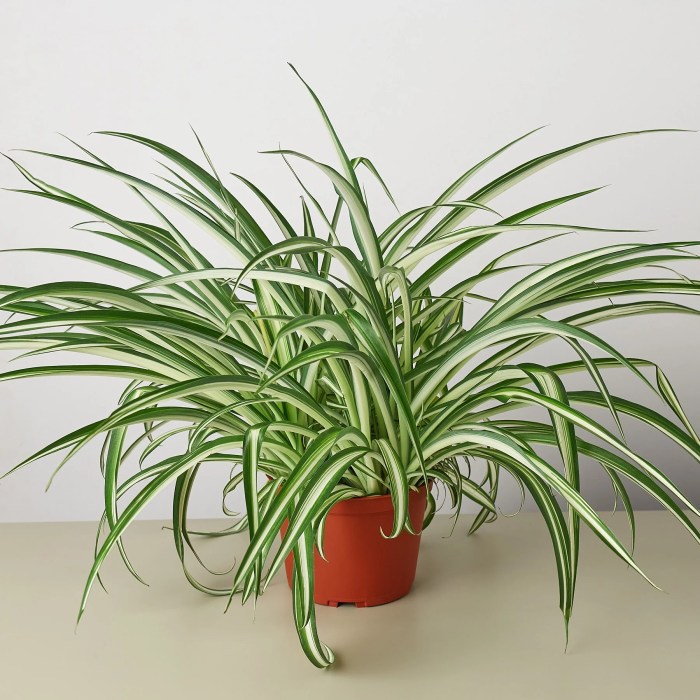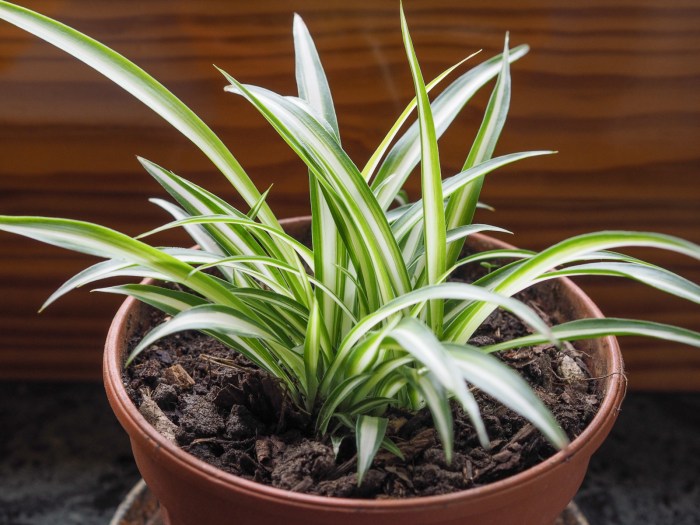Introducing the hanging money plant, a beloved houseplant prized for its cascading stems, lush foliage, and purported ability to bring good fortune. This comprehensive guide delves into the intricacies of caring for, propagating, and appreciating this captivating plant.
Whether you’re a seasoned plant enthusiast or a budding gardener, this guide will equip you with the knowledge and inspiration to cultivate a thriving hanging money plant.
Plant Care and Maintenance
Hanging money plants, known for their cascading foliage and air-purifying abilities, require specific care and maintenance to thrive indoors. Understanding their ideal growing conditions and addressing common issues can ensure their health and longevity.
Watering
Hanging money plants prefer consistently moist soil, but avoid overwatering, which can lead to root rot. Water thoroughly when the top inch of soil feels dry to the touch. Allow excess water to drain from the drainage holes to prevent waterlogging.
Lighting
These plants thrive in bright, indirect light. Avoid direct sunlight, as it can scorch the leaves. East- or west-facing windows provide suitable lighting conditions. If natural light is limited, consider using artificial grow lights.
Fertilization
Fertilize hanging money plants monthly during the growing season (spring and summer) with a balanced liquid fertilizer diluted to half strength. Avoid over-fertilizing, as it can damage the roots.
Temperature and Humidity, Hanging money plant
Hanging money plants prefer warm temperatures between 65-85°F (18-29°C) and moderate humidity. Misting the leaves regularly or placing the plant on a tray filled with pebbles and water can increase humidity levels.
Common Pests and Diseases
Aphids, mealybugs, and spider mites are common pests that can infest hanging money plants. Treat infestations promptly with insecticidal soap or neem oil. Fungal diseases like powdery mildew and root rot can occur in poorly ventilated or overwatered conditions. Improve air circulation and adjust watering practices to prevent these issues.
Propagation Techniques

Propagating hanging money plants is an easy and rewarding way to create new plants for your home or garden. There are three main methods for propagating hanging money plants: stem cuttings, leaf cuttings, and air layering.
Stem Cuttings
Stem cuttings are the most common method for propagating hanging money plants. To take a stem cutting, use a sharp knife or scissors to cut a 4- to 6-inch piece of stem from a healthy plant. Remove the leaves from the bottom inch or two of the stem, and then dip the cut end in rooting hormone.
Plant the cutting in a pot filled with moist potting mix, and keep the soil moist until the cutting has rooted.
Known for its trailing vines and air-purifying qualities, the hanging money plant is a popular choice among indoor plant enthusiasts. Its versatility makes it suitable for various hanging baskets and pots. Like the money plant, many trailing house plants can add a touch of greenery and elegance to your home décor.
These plants, with their cascading foliage, create a captivating visual effect that complements any indoor space. The hanging money plant, with its trailing nature, fits perfectly into this category, offering a lush and vibrant addition to your home.
Leaf Cuttings
Leaf cuttings are another easy way to propagate hanging money plants. To take a leaf cutting, use a sharp knife or scissors to cut a leaf from a healthy plant. Remove the petiole (the stem of the leaf), and then dip the cut end in rooting hormone.
Plant the cutting in a pot filled with moist potting mix, and keep the soil moist until the cutting has rooted.
Air Layering
Air layering is a more advanced method for propagating hanging money plants. To air layer a hanging money plant, use a sharp knife to make a cut halfway through the stem of a healthy plant. Insert a toothpick or small piece of wood into the cut to keep it open, and then wrap the cut area with moist sphagnum moss.
Cover the sphagnum moss with plastic wrap, and secure it with tape. Keep the sphagnum moss moist, and in a few weeks, roots will develop on the stem. Once the roots are developed, you can cut the stem below the roots and pot the new plant.The
best time to propagate hanging money plants is in the spring or summer. The plants will be actively growing during this time, and they will root more easily. Hanging money plants can be propagated in a variety of environmental conditions, but they will do best in warm, humid conditions.
Varieties and Cultivars
Hanging money plants, scientifically known as Plectranthus verticillatus, exhibit a wide range of varieties and cultivars, each boasting unique characteristics and growth habits.
The most common variety, Plectranthus verticillatusvar. verticillatus, displays oval-shaped, velvety leaves with scalloped edges and prominent veins. It grows vigorously and can reach heights of up to 3 feet.
The hanging money plant is a popular choice for indoor gardening due to its easy care and air-purifying qualities. However, if you’re looking for a more space-saving solution, consider a vertical wall planter indoor . These planters allow you to create a living wall of greenery, maximizing vertical space while adding a touch of nature to your home.
The hanging money plant thrives in these planters, cascading down the wall with its trailing vines and lush foliage.
Cultivars
Numerous cultivars have been developed to enhance specific traits, such as leaf color, size, and hardiness.
- ‘Variegata’:Features variegated leaves with creamy-white edges.
- ‘Goldilocks’:Boasts golden-yellow foliage with a compact growth habit.
- ‘All Gold’:Displays bright yellow leaves and a mounding growth pattern.
- ‘Rainbow Bush’:Showcases a mix of green, yellow, and pink leaves.
- ‘Snow Queen’:Produces pure white leaves with serrated edges.
When selecting a variety or cultivar, consider factors such as the desired size, leaf color, and hardiness for your specific growing conditions and preferences.
Decorative Uses

Hanging money plants have become a popular choice for home décor due to their versatility and aesthetic appeal. These plants can be displayed in a variety of ways to create unique and eye-catching displays.
One popular way to use hanging money plants is in hanging baskets. This allows the plants to cascade down, creating a lush and inviting display. Hanging baskets can be hung from ceilings, walls, or even outdoors on patios or balconies.
Macrame Hangers
Another stylish way to display hanging money plants is using macrame hangers. Macrame is a type of knotting that creates intricate and beautiful patterns. Macrame hangers can be used to suspend plants from ceilings or walls, adding a touch of bohemian flair to any space.
Wall Planters
Wall planters are a great option for displaying hanging money plants in smaller spaces. These planters can be mounted directly to walls, creating a vertical garden effect. Wall planters come in a variety of shapes and sizes, so you can find one that fits your space and style.
No matter how you choose to display them, hanging money plants are a beautiful and versatile addition to any home décor. Their lush foliage and trailing vines add greenery, texture, and color to any space.
Symbolism and Cultural Significance

Hanging money plants have a rich history of cultural significance and symbolism in many parts of the world. These plants are often associated with good luck, prosperity, and abundance.
In China, hanging money plants are known as “lucky plants” and are believed to bring wealth and prosperity to the household. They are often given as gifts during special occasions, such as Chinese New Year, to wish the recipient good fortune.
Southeast Asia
In Southeast Asia, hanging money plants are believed to attract wealth and prosperity. They are often hung in homes, businesses, and temples. In some cultures, it is believed that the more hanging money plants a person has, the more wealth they will attract.
Last Recap: Hanging Money Plant
In conclusion, the hanging money plant is a versatile and captivating addition to any home or garden. Its ease of care, diverse propagation methods, and rich cultural significance make it an enduring favorite among plant lovers. Embrace the beauty and symbolism of this remarkable plant and witness the joy it brings to your space.
Question Bank
How often should I water my hanging money plant?
Water thoroughly when the soil surface feels dry to the touch. Avoid overwatering, as this can lead to root rot.
What type of light does a hanging money plant need?
Bright, indirect light is ideal. Avoid direct sunlight, as this can scorch the leaves.
Can I propagate a hanging money plant from cuttings?
Yes, stem cuttings can be easily rooted in water or soil.